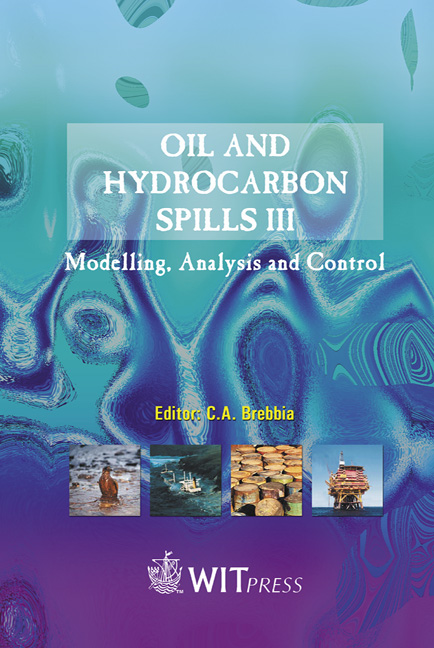Use Of Remote Sensing To Determine The Effect Of An In Situ Burn Of Jet Fuel On Emergent Aquatic Vegetation
Price
Free (open access)
Transaction
Volume
59
Pages
Published
2002
Size
651 kb
Paper DOI
10.2495/OIL020381
Copyright
WIT Press
Author(s)
E. S. Gilfillan, D. S. Page & C. Perry
Abstract
Use of remote sensing to determine the effect of an in situ burn of jet fuel on emergent aquatic vegetation. E. S. Gilfillan, D.S. Page & C. Perry Department of Chemistry, Bowdoin College, USA Abstract On 29 March 1993 there was a spill of 245,700 liters of Jet Fuel (JP-5) from the Brunswick Naval Air Station in Brunswick, Maine USA. The fuel flowed into a fresh water marsh which was contained within a beaver pond. If the fuel leaked past the beaver dam it would impact very sensitive wildlife habitat. The decision was made to bum the fuel in situ. The resulting fire consumed virtually all of the fuel in the marsh. Subsequent chemical analysis found that while pyrogenic PAH were enriched in the burn residue, the overall total loss of PAH through combustion was much greater. The dominant emergent vegetation in the marsh is the Broad-Leaved Cattail (Typha latfolia). It was unclear whether the cattails had been damaged either by the spill or by the fire. Aerial photographs taken before and after the fire event were obtained. These were digitized and subjected to image analysis. Grey scale values corresponding to cattails and open water were determined. These were confirmed by ground truth observations. Results showed that there was no reduction in the areal extent of cattails between the image taken before the spill and the image taken after the spill. The spill and fire had not damaged the cattails. 1 Introduction On 29 March 1993 a total of 245,700 liters of jet fuel (JP-5) was spilled from the tank farm at the Brunswick Naval Air Station (BNAS). The JP-5 traveled through drains and culverts to a small brook which fed a beaver pond. The JP-5
Keywords





